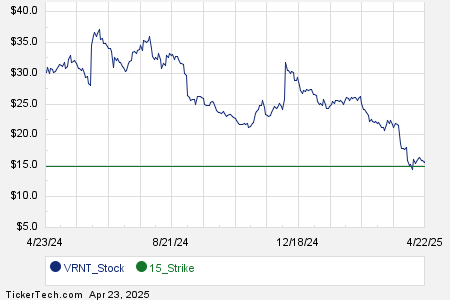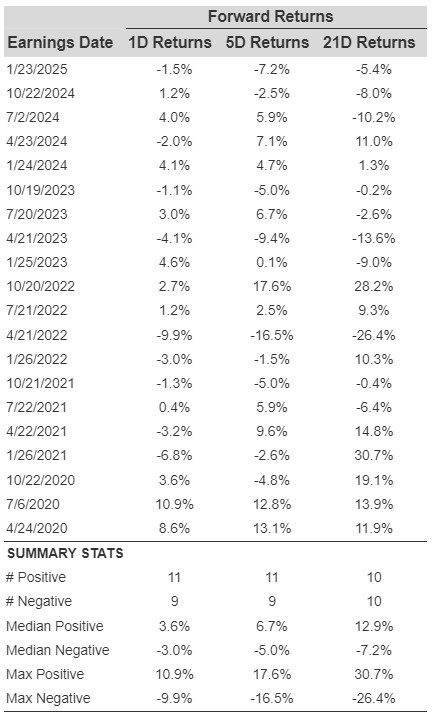Crude Oil and Gasoline Prices Decline Amid Easing Tensions and Supply Concerns
June WTI crude oil (CLM25) is down -1.82 (-2.86%) today, while May RBOB gasoline (RBK25) has decreased by -0.0265 (-1.27%).
Today, crude oil and gasoline prices dropped from their 2-1/2 week highs, influenced by a stronger dollar, which typically results in lower energy prices.
Production Decisions and OPEC+ Output Hikes
Crude oil experienced additional pressure following remarks from Kazakhstan’s energy minister, who stated that the country would not cut its crude production. The minister emphasized the prioritization of national interests over OPEC+ obligations, potentially aggravating Saudi Arabia. Speculation rises that Saudi Arabia may increase its crude production to diminish prices and penalize members exceeding their output limits, which could lead to an oversupply in global markets.
Losses in crude oil intensified after Reuters reported that several OPEC+ nations might propose accelerating output increases in June for the second consecutive month. A meeting is scheduled for May 5 to outline the June output plan.
Market Influences and Inventory Reports
Initially, crude prices opened higher due to signs of easing US-China trade tensions, which would support economic growth and energy demand. Additionally, support came from a bullish weekly EIA inventory report.
However, crude oil prices are facing downward pressure from potential developments in the US-Iran nuclear negotiations. Iran’s foreign minister indicated a “better understanding” with the US after recent talks, creating anticipations of an agreement that may alleviate export restrictions on Iranian crude oil. Discussions are set to continue on Wednesday in Oman.
Inventory Dynamics and Global Demand
An increase in crude oil held on tankers globally is negative for oil prices. Vortexa reported a 19% week-over-week rise in crude oil stored on stationary tankers, reaching 78.19 million barrels, the highest level in eight months as of April 18.
Crude prices encountered a challenging environment this month, as they fell to a four-year low on April 9. Concerns regarding tariffs and weaker global economic growth continue to weigh heavily on energy prices, even as President Trump temporarily paused some reciprocal tariffs last Wednesday. Other previously announced tariffs remain in effect.
Despite these challenges, robust crude demand in China, the largest crude importer, supports oil prices. In March, China’s crude imports surged to 12.1 million barrels per day (bpd), the highest volume since August 2023.
OPEC+ Production Plans and Global Economics
The recent sentiment in crude prices has been affected by OPEC+’s decision on April 3 to boost production in May by 411,000 bpd, a sharp increase compared to the 138,000 bpd added in April. OPEC+ aims for a gradual restoration of a total of 2.2 million bpd through 2026—originally planned for completion by late 2025, the full restoration will now extend to September 2026. In March, OPEC crude production increased by 80,000 bpd, reaching a 13-month high of 27.43 million bpd.
Support for crude prices emerged when the US Treasury’s Office of Foreign Assets Control sanctioned a Chinese refinery alongside 19 entities linked to the shipment of Iranian crude oil. These sanctions, coupled with pressure from the US for a nuclear deal, could significantly reduce global Iranian crude supplies. Rystad Energy A/S estimates that a maximum-pressure campaign could remove approximately 1.5 million bpd from markets, presenting a potential boost for crude prices.
Geopolitical Influences and US Sanctions
Tensions in the Middle East have also been a supportive factor for crude oil prices, as they pose risks of disrupting supplies. The resumption of Israeli airstrikes in Gaza has terminated a two-month ceasefire with Hamas, escalating regional instability. Concurrently, US military actions against Houthi rebels in Yemen signal continued geopolitical volatility affecting oil markets.
Strategic sanctions imposed by the US on Russia’s oil industry on January 10 could restrict global oil supplies. The sanctions targeted Gazprom Neft and Surgutneftgas, which were responsible for about 970,000 bpd in exports during the first ten months of 2024. While Russian oil product exports rose in March to a five-month high, detailed vessel-tracking data indicated a decline in crude exports of 40,000 bpd to 3.13 million bpd by mid-April.
EIA Inventory Insights
Today’s weekly EIA report offered support for crude prices, revealing a smaller-than-expected inventory build of 244,000 barrels, against anticipated growth of 1.55 million barrels. Notably, gasoline supplies plummeted by 4.48 million barrels, surpassing expectations, as US gasoline demand surged by 11.3% week-over-week to a six-month high of 9.4 million bpd. EIA distillate stockpiles also dropped by 2.35 million barrels, again exceeding expectations.
Current EIA data indicates that (1) US crude oil inventories are 5.3% below the seasonal five-year average, (2) gasoline inventories are 2.5% below the seasonal average, and (3) distillate inventories are 13.1% below the five-year seasonal average. In the week ending April 18, US crude oil production remained unchanged at 13.46 million bpd, slightly below the record high of 13.631 million bpd achieved on December 6.
Baker Hughes reported a slight increase in active US oil rigs—up by one to 481 rigs for the week ending April 18, still above the three-year low of 472 rigs recorded on January 24. Over the past two years, the number of oil rigs has steadily declined from a four-and-a-half-year peak of 627 rigs in December 2022.
On the date of publication, Rich Asplund did not hold any positions in the mentioned securities. All information in this article is for informational purposes. For further details, please refer to the Barchart Disclosure Policy.
The opinions expressed herein reflect those of the author and do not necessarily align with those of any affiliated entities.



